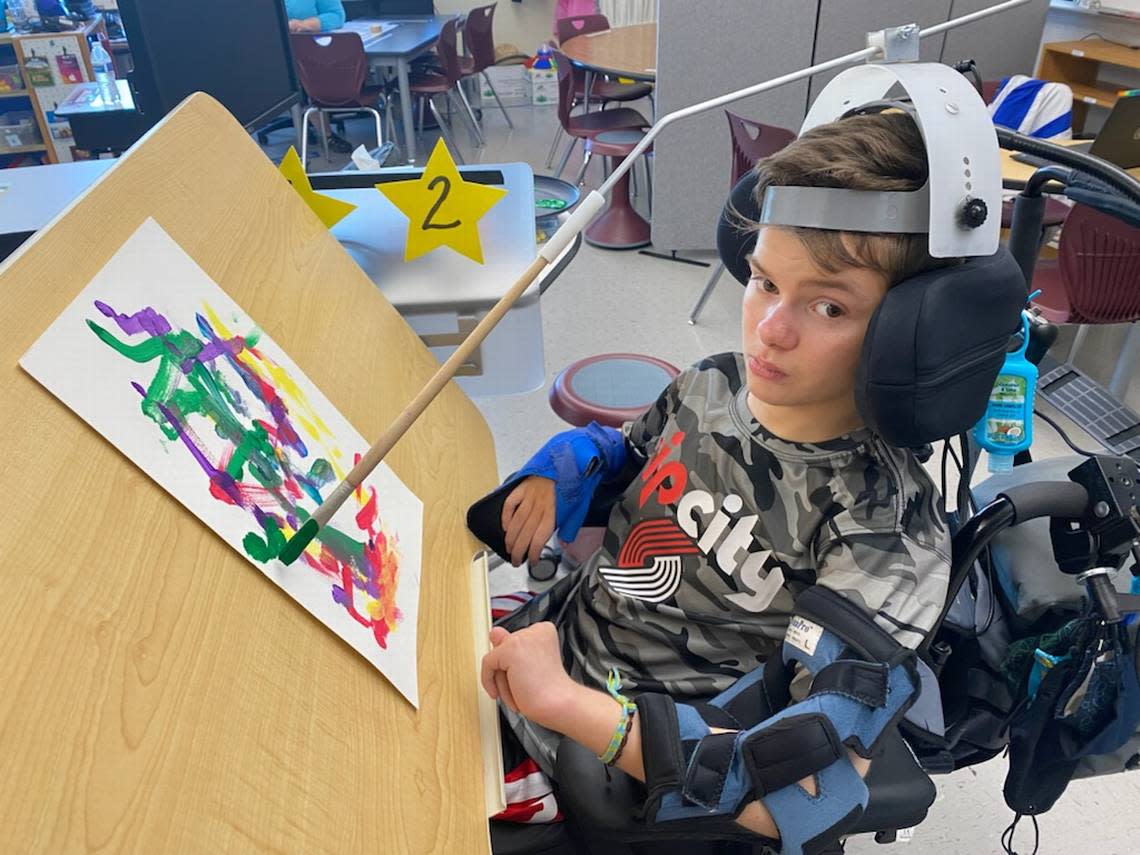Special ed students are worth the money. It’s time WA provides enough of it | Opinion

The story of Gabe Scheel is a testament to the power of public education.
The eighth-grade student at Ray Reynolds Middle School in Pasco had not attended school before his 7th grade year. He is unable to speak and is paralyzed after suffering a traumatic brain injury when he was younger, and it took time before his parents were ready for him to leave home for even part of the day.
Thanks to the devoted attention he has received from his teacher, his paraeducator and his nurse, after one year Gabe is communicating through eye-tracking technology that allows him to answer questions in class by gazing at a screen and selecting the correct answer with his eyes.
The device also allows him to paint, and his dedication to learning caught the attention of Gov. Jay Inslee early in the school year.
Last fall, Gabe received a letter from the governor along with the Shining Light Award for serving “as a beacon of leadership and inspiration to all Washingtonians.”
Pasco School Superintendent Michelle Whitney told the Tri-City Herald that Gabe’s progress shows how public education can change lives.
Can you imagine being a mother whose son couldn’t tell her he loves her, but now he can? asks Whitney.
Gabe’s story is inspiring, but there are thousands of special needs children in Washington state who depend on the public school system to help them reach those life-changing achievements.
The concern right now is that the legislature isn’t going to come through.
Whitney is the president of the Washington Association of School Administrators (WASA), which this year asked state lawmakers to make special education a priority. The group has asked for $800 million.
Dan Steele, assistant executive director of WASA, said the organization decided to ask for what it really needs — not what it thinks it can get.
He said legislators need to know how much it truly costs to fully fund special education in Washington state.
Now that the session is part-way over, WASA members are very concerned with the initial reports they’ve seen so far.
Steele said it looks like the Senate has allocated $350 million for special education, while the House has allocated only $170 million.
Obviously, WASA members prefer the Senate version, even though it still falls short of what they need. But the baseline from the House is shockingly low — special ed cannot be done on the cheap.
Whitney said special education needs in each district can vary depending on the students, but sometimes it can run into millions of dollars.
If there isn’t enough from the state, then school districts must take money from local levy money to fill in the gaps.
Special education is specifically designed to address the unique needs of each student at no cost to families. Many times that can involve hiring a one-on-one staff member to support the student throughout the school day.
But those costs are worth it.
According to the Washington state Constitution, the state has a paramount duty to amply fund K-12 education.
Over the years, lawmakers have ignored that duty. That has resulted in an unfair system in which students from poorer communities were denied resources that students from affluent areas were able to receive because local levy money was used to make up the difference.
Even after the McCleary lawsuit, which tried to force the state to cover all basic education expenses, little has changed.
Special education is basic education and should be treated as such.
With the House recommending $170 million for statewide special education needs when WASA says it needs $800 million, it appears budget makers in the House aren’t taking the constitutional duty as seriously as they should.
It’s true that there are many social services that need funding throughout Washington state, but if educating K-12 students is supposed to be the constitutional priority, then it should be the priority.
